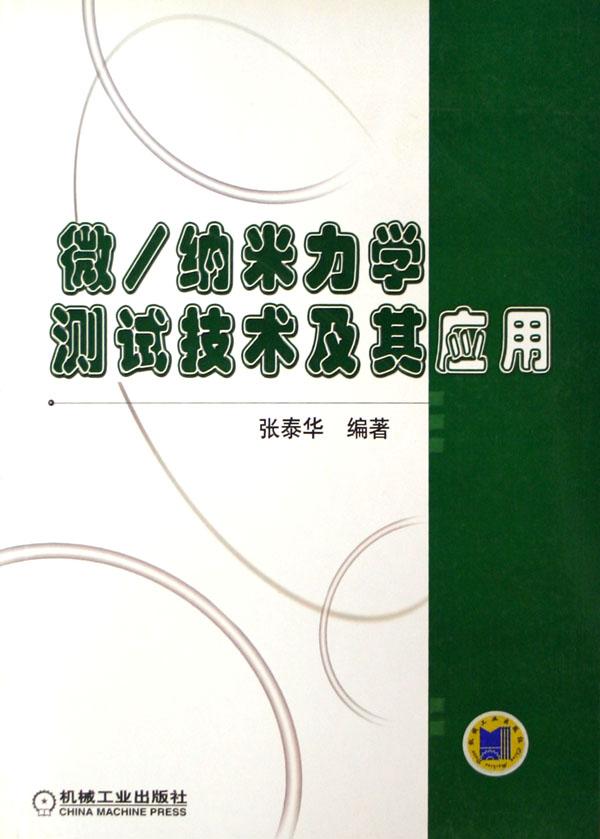27 resultados para 139-855B
em Chinese Academy of Sciences Institutional Repositories Grid Portal
Resumo:
利用能量为50MeV的12C束流,通过反应130Te(12C,3n)布居了139Ce的高自旋态.基于标准在束核谱学实验测量结果,扩展并更新了139Ce的能级纲图.139Ce的能级结构具有球形原子核的典型特征,其高自旋态由单粒子激发形成.利用经验壳模型计算了139Ce的多准粒子激发态能量,研究了其高自旋激发态的多准粒子特性.
Resumo:
High-spin states in Ce-139 have been populated using the Te-130(C-12, 3n) reaction at beam energy of 50MeV. The level scheme of Ce-139 has been revised and extended greatly up to E=5765.0keV. The level structure of Ce-139 shows typical characteristics of spherical nucleus, and the high-spin states were formed by the excitations of valence nucleons. Energies of the yrast and near yrast high-spin states in Ce-139 have been calculated by the empirical shell model, and the multi-quasiparticle nature of high-spin excited states has been discussed.
Resumo:
High-spin states in nucleus Pm-139 have been studied using the reaction Cd-116(Al-27, 4n)Pm-139. Two dipole cascades have been found. Spin and parity assignments were based on the Directional Correlation of Oriented Nuclei (DCO) ratios and systematic behavior in neighboring odd-proton nuclei. The level structures of Pm-139 are compared with those of the N = 78 isotone Eu-141 in which two dipole bands have been confirmed as magnetic rotational bands. The close similarity between them suggests that the dipole bands in Pm-139 may be magnetic rotational bands.
Resumo:
通过重离子核反应116Cd(27Al,4n)与在束γ谱的实验技术,对A=130~140核区的奇A核139Pm的高自旋态进行了研究.根据γ-γ符合关系、γ射线的相对强度和各向异性度的测量结果,扩展并更新了139Pm的能级纲图.实验观测到基于πh11/2和πg7/2-[πh11/2]2(或者πd5/2-[πh11/2]2)组态的转动带,利用已有的理论计算结果对这些转动带进行了解释.同时还观测到三个具有很强M1跃迁、旋称劈裂很小的-I=1的带.通过简单分析和系统学比较,指认了它们的组态,发现它们具备磁转动带的特性,很可能是磁转动带.
Resumo:
本文对桥式类型起重机箱形梁在变幅载荷作用下疲劳裂纹扩展规律及其寿命进行了实验研究,建立疲劳裂纹扩展规律及其寿命进行了实验研究,建立了疲劳裂纹扩展的Paris公式.由得到的裂纹扩展公式估算了箱形梁的疲劳寿命和疲劳强度,并与试验结果作了比较
Resumo:
The piezoelastodynamic field equations are solved to determine the crack velocity at bifurcation for poled ferroelectric materials where the applied electrical field and mechanical stress can be varied. The underlying physical mechanism, however, may not correspond to that assumed in the analytical model. Bifurcation has been related to the occurrence of a pair of maximum circumferential stress oriented symmetrically about the moving crack path. The velocity at which this behavior prevails has been referred to as the limiting crack speed. Unlike the classical approach, bifurcation will be identified with finite distances ahead of a moving crack. Nucleation of microcracks can thus be modelled in a single formulation. This can be accomplished by using the energy density function where fracture initiation is identified with dominance of dilatation in relation to distortion. Poled ferroelectric materials are selected for this study because the microstructure effects for this class of materials can be readily reflected by the elastic, piezoelectic and dielectric permittivity constants at the macroscopic scale. Existing test data could also shed light on the trend of the analytical predictions. Numerical results are thus computed for PZT-4 and compared with those for PZT-6B in an effort to show whether the branching behavior would be affected by the difference in the material microstructures. A range of crack bifurcation speed upsilon(b) is found for different r/a and E/sigma ratios. Here, r and a stand for the radial distance and half crack length, respectively, while E and a for the electric field and mechanical stress. For PZT-6B with upsilon(b) in the range 100-1700 m/s, the bifurcation angles varied from +/-6degrees to +/-39degrees. This corresponds to E/sigma of -0.072 to 0.024 V m/N. At the same distance r/a = 0.1, PZT-4 gives upsilon(b) values of 1100-2100 m/s; bifurcation angles of +/-15degrees to +/-49degrees; and E/sigma of -0.056 to 0.059 V m/N. In general, the bifurcation angles +/-theta(0) are found to decrease with decreasing crack velocity as the distance r/a is increased. Relatively speaking, the speed upsilon(b) and angles +/-theta(0) for PZT-4 are much greater than those for PZT-6B. This may be attributed to the high electromechanical coupling effect of PZT-4. Using upsilon(b)(0) as a base reference, an equality relation upsilon(b)(-) < upsilon(b)(0) < upsilon(b)(+) can be established. The superscripts -, 0 and + refer, respectively, to negative, zero and positive electric field. This is reminiscent of the enhancement and retardation of crack growth behavior due to change in poling direction. Bifurcation characteristics are found to be somewhat erratic when r/a approaches the range 10(-2)-10(-1) where the kinetic energy densities would fluctuate and then rise as the distance from the moving crack is increased. This is an artifact introduced by the far away condition of non-vanishing particle velocity. A finite kinetic energy density prevails at infinity unless it is made to vanish in the boundary value problem. Future works are recommended to further clarify the physical mechanism(s) associated with bifurcation by means of analysis and experiment. Damage at the microscopic level needs to be addressed since it has been known to affect the macrocrack speeds and bifurcation characteristics. (C) 2002 Published by Elsevier Science Ltd.
Resumo:
利用数值方法研究材料空洞化和承受应力沿板厚分布的非均匀性对材料分叉(平板中平面剪切带和表面皱曲)的作用.
Resumo:
本文指出联合二能级气体激光器(包括流动的)空间烧孔被消除的条件是短程扩散时间远小于辐射寿命;当气体极其稀薄时,空间烧孔被消除的条件是短程自由运动时间远小于辐射寿命。并给出具体的判别公式。
Resumo:
A perturbational h4 compact exponential finite difference scheme with diagonally dominant coefficient matrix and upwind effect is developed for the convective diffusion equation. Perturbations of second order are exerted on the convective coefficients and source term of an h2 exponential finite difference scheme proposed in this paper based on a transformation to eliminate the upwind effect of the convective diffusion equation. Four numerical examples including one- to three-dimensional model equations of fluid flow and a problem of natural convective heat transfer are given to illustrate the excellent behavior of the present exponential schemes, the h4 accuracy of the perturbational scheme is verified using double precision arithmetic.
Resumo:
采用普通照相和短时间曝光成像的ICCD照相技术,观测了低于大气压条件下产生的纯氩和氩-氢直流电弧等离子体射流的高温区的瞬时形貌及其变化,结合电弧弧根在阳极表面贴附行为的观测结果,对射流的稳定性与三维特性和弧根行为之间的关联进行了分析。结果表明,层流等离子体射流的高温区长度明显长于湍流射流情形,并且具有很好的轴对称性和时间稳定性;湍流射流的高温区瞬时形貌则表现出明显的三维特征;等离子体射流的三维特性与弧根在阳极表面的贴附行为没有直接的联系。
Resumo:
为了减少空间碎片的产生,星箭分离后,需要在轨排放火箭末级贮箱内的剩余推进剂.分析表明,排放条件下的推进剂射流进入太空后,立即失稳破碎为大量液滴;液滴在高真空环境下扩散,它们的表面不断有气体分子蒸发,逐渐在箭体周围形成了一个由液滴和蒸气分子组成的羽流场.采取Lagrange方法追踪该流场中每个液滴的运动轨迹以及表面蒸发冷凝过程,利用直接模拟Monte Carlo方法计算蒸气分子的运动和碰撞,然后通过微观量的统计平均获得感兴趣的宏观流场、箭体表面的压力和剪应力分布等.为了检验稀薄蒸气算法、模型和程序,模拟了真空水射流周围水蒸气羽流场,获得的径向Pitot压力分布与Fuchs和Legge的实验数据的符合.在此基础上,分别模拟了CZ-4B火箭末级剩余燃料偏二甲肼在不同排放方式下的三维稀薄蒸气与液滴羽流场.计算表明:原排放方式的扰动力矩相当大,超出了火箭姿控范围,新排放方式的扰动力矩很小,处于火箭姿控范围之内.这些预测得到了飞行遥测数据的支持.
Resumo:
 本书系统地介绍了微/纳米力学测试技术中最常用的压入和划入技术及其典型应用。全书共分13章。测试技术方面,内容涉及接触力学、测试原理、方法、校准、仪器、力学参量、影响因素。典型应用方面,内容涉及在表面工程、微机电系统、生物、高聚物和金属玻璃等领域内的微/纳米力学行为的测试。本书可供力学、材料、物理、电子、机械、生物和化学等领域的研究人员、工程技术人员以及大专院校相关专业的师生参考。
本书系统地介绍了微/纳米力学测试技术中最常用的压入和划入技术及其典型应用。全书共分13章。测试技术方面,内容涉及接触力学、测试原理、方法、校准、仪器、力学参量、影响因素。典型应用方面,内容涉及在表面工程、微机电系统、生物、高聚物和金属玻璃等领域内的微/纳米力学行为的测试。本书可供力学、材料、物理、电子、机械、生物和化学等领域的研究人员、工程技术人员以及大专院校相关专业的师生参考。
目录
前言
第1章 绪论
1.1硬度的定义和分类
1.2纳米压入和划入技术的发展
1.3纳米压入和划入技术的特点
参考文献
第2章 压入接触力学
2.1弹性接触
2.1.1 Soeddon解
2.1.2锥形压针
2.1.3球形压针
2.1.4圆柱压针
2.2弹塑性接触
2.2.1塑性发生
2.2.2完全塑性
2.2.3材料响应
参考文献
第3章 纳米压入测试原理
3.1压入硬度和模量
3.2连续刚度测量
3.3载荷一深度数据确定的材料参数
3.3.1马氏硬度
3.3.2压入蠕变
3.3.3压入松弛
3.3.4压入弹性功和塑性功
参考文献
第4章 纳米压入测试方法
4.1压针类型
4.1.1玻氏压针
4.1.2立方角压针
4.1.3维氏压针
4.1.4努氏压针
4.1.5圆锥压针
4.1.6球形压针
4.1.7圆柱压针
4.1.8楔形压针
4.1.9考虑因素
4.2测试环节
4.2.1样品准备
4.2.2环境控制
4.2.3间距选择
4.2.4表面探测
4.2.5驱动方式
4.2.6测试步骤
4.2.7测试报告
参考文献
第5章 纳米压入的确认和校准
5.1直接确认和校准
5.2间接校准
5.3测试和校准的实例
参考文献
第6章 纳米压入和划入的测量仪器
6.1仪器技术指标的定义
6.2美国Mrs公司
6.3美国Hysitmn公司
6.4瑞士CSM公司
6.5英国MML公司
6.6澳大利亚CSIRO公司
6.7测量仪器的发展趋势
参考文献
第7章 力学参量的测量
7.1压入方式
7.1.1硬度和模量
7.1.2断裂韧度
7.1.3蠕变和粘弹行为
7.1.4压入应力??应变曲线
7.1.5加卸载曲线涉及的
部分现象
7.2划人方式
7.2.1块体材料
7.2.2薄膜材料
7.2.3粗糙度
7.3弯曲方式
7.3.1微悬臂梁静载弯曲
7.3.2微桥静载弯曲
7.3.3微结构疲劳
7.4吸引方式
7.5声发射测试
7.6温度测试
参考文献.
第8章 影响纳米压入测试的因素
8.1测试仪器的影响
8.1.1压针缺陷
8.1.2测试方法
8.1.3接触零点的确定
8.1.4载荷和位移的分辨力
8.2样品的表面状态和性质
8.2.1表面吸湿
8.2.2表面粗糙度
8.2.3残余应力
8.2.4凹陷和凸起变形
8.3纳米压入和划入测试所面临的问题
参考文献
第9章 在表面工程中的应用
9.1金属材料表面激光强化的力学表征
9.2硬质膜的力学和摩擦学性能评估
9.2.1显微硬度测试
9.2.2纳米压人测试
9.2.3纳米划入测试
9.2.4膜材的影响
参考文献
第10章 在微机电系统中的应用
10.1薄膜测试
10.1.1典型薄膜材料的硬度和模量
10.1.2薄膜疲劳
10.1.3淀积工艺对二氧化硅薄膜力学性质的影响
10.2微结构弯曲
10.2.1微结构的静态弯曲
10.2.2微结构的动态弯曲
参考文献
第11章 在生物及其相关材料中的应用
11.1人工林杉木管胞细胞壁
11.2人体腰椎骨
11.3存储液对人体牙齿微力学性能的影响
参考文献
第12章 在高聚物中的应用
12.1PMMA单轴拉伸和弯曲力学行为
12.2划入测试的理论分析
12.3韧性行为的描述
12.4脆性行为的描述
12.4.1温度效应
12.4.2应变率效应
参考文献
第13章 在金属玻璃中的应用
13.1硬度和屈服应力的关系
13.2不连续的塑性变形
13.3压痕形貌和微结构变化
13.4应变率效应
13.5钕基金属玻璃的变形行为
参考文献
附录 常见问题的回答
1测试数量
2压入间距
3压入深度
4泊松比的选择
5典型材料的参数
6断裂韧度测试压针的选择
7纳米薄膜的测试
8典型材料的压入变形行为
9显微硬度和纳米压入硬度的关系
10压入影响区及其边界效应
10.1压入影响区的有限元模拟
10.2边界距离影响的有限元模拟
10.3压人间距影响的测试
参考文献

